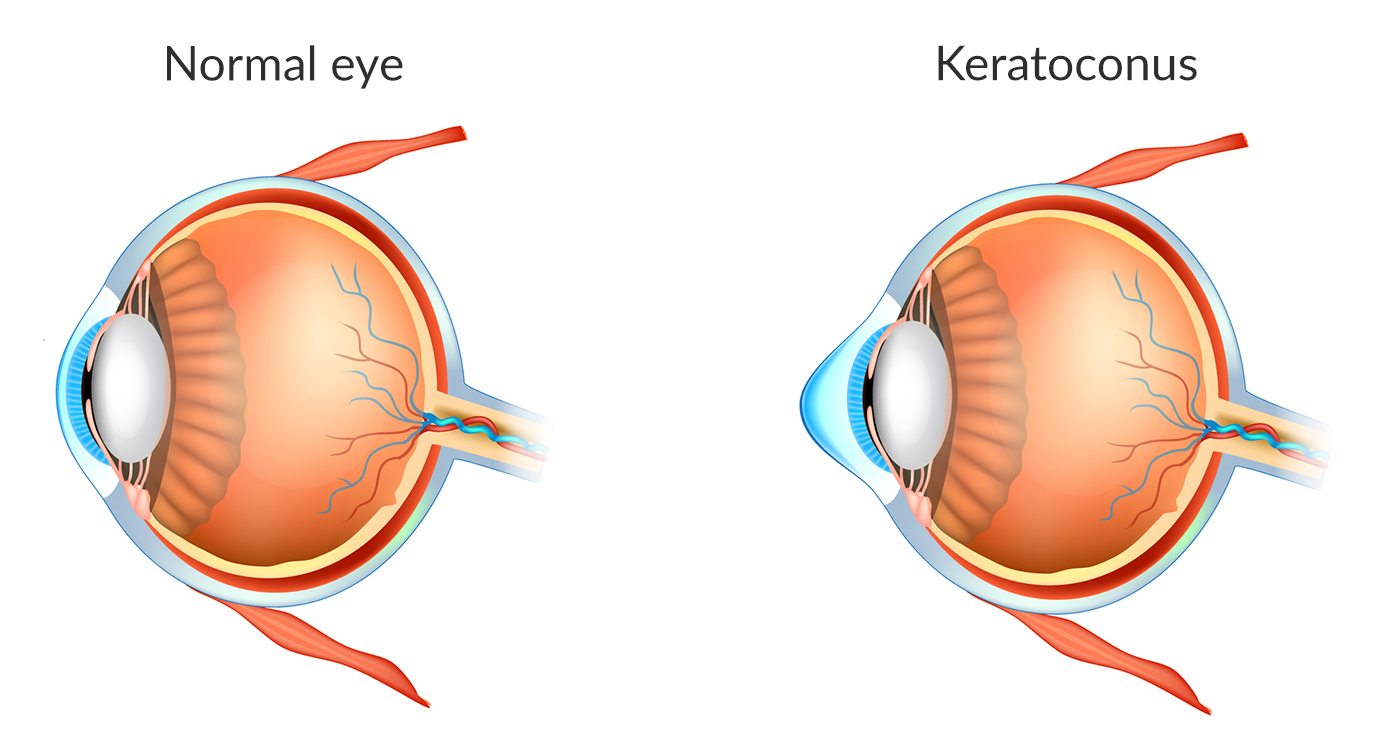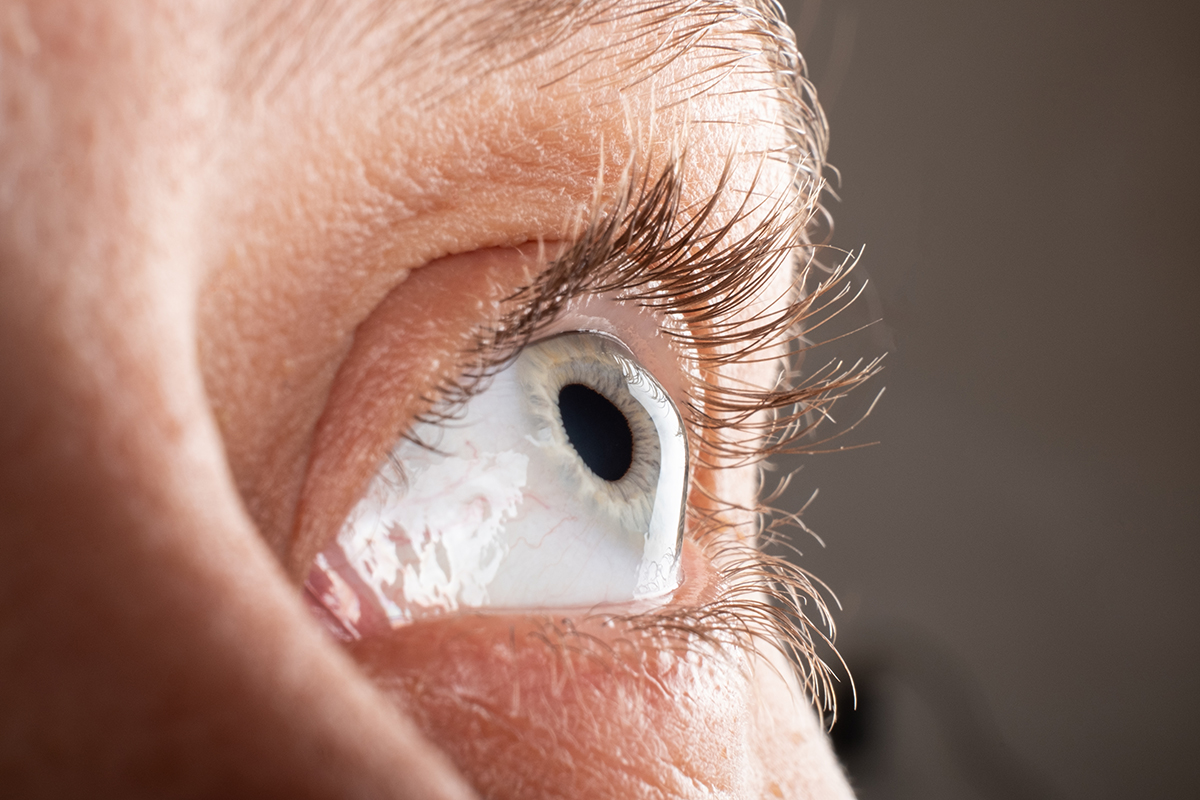Keratoconus is an eye condition caused by the progressive thinning of the cornea that results in blurred vision. The etiology is still not completely understood but it is likely secondary to oxidative stress that leads to an imbalance between the production and destruction of the collagen and /or lack of the cells that stabilized the anterior layers of the cornea.

Normal Cornea and Keratoconus (KC) Cornea
Risk factors are a family history of keratoconus, Down’s Syndrome, chronic eye allergies and patients that chronically rub their eyes. A relationship with hormonal changes is new but still controversial.
Keratoconus is mostly diagnosed at a young age. Patients usually experience cloudy vision, ghosting objects, eye strain, sensitivity to bright lights and frequent glasses prescription changes especially with increasing astigmatism.
The diagnosis is performed by the eye care provider with an eye exam and ancillary testing including corneal topography and measurements of the corneal thickness pattern.

Corneal topography
Treatment depends on the stage of keratoconus – corrective glasses, soft contact lens, rigid contact lenses, hybrid contact lenses, collagen cross linking, corneal transplantation, and corneal rings are some of the options available.
Facts:
- Symptoms start usually at a young age.
- It is the leading cause of corneal transplant in the US.
- It is a bilateral disease but commonly asymmetrical in its symptoms.






